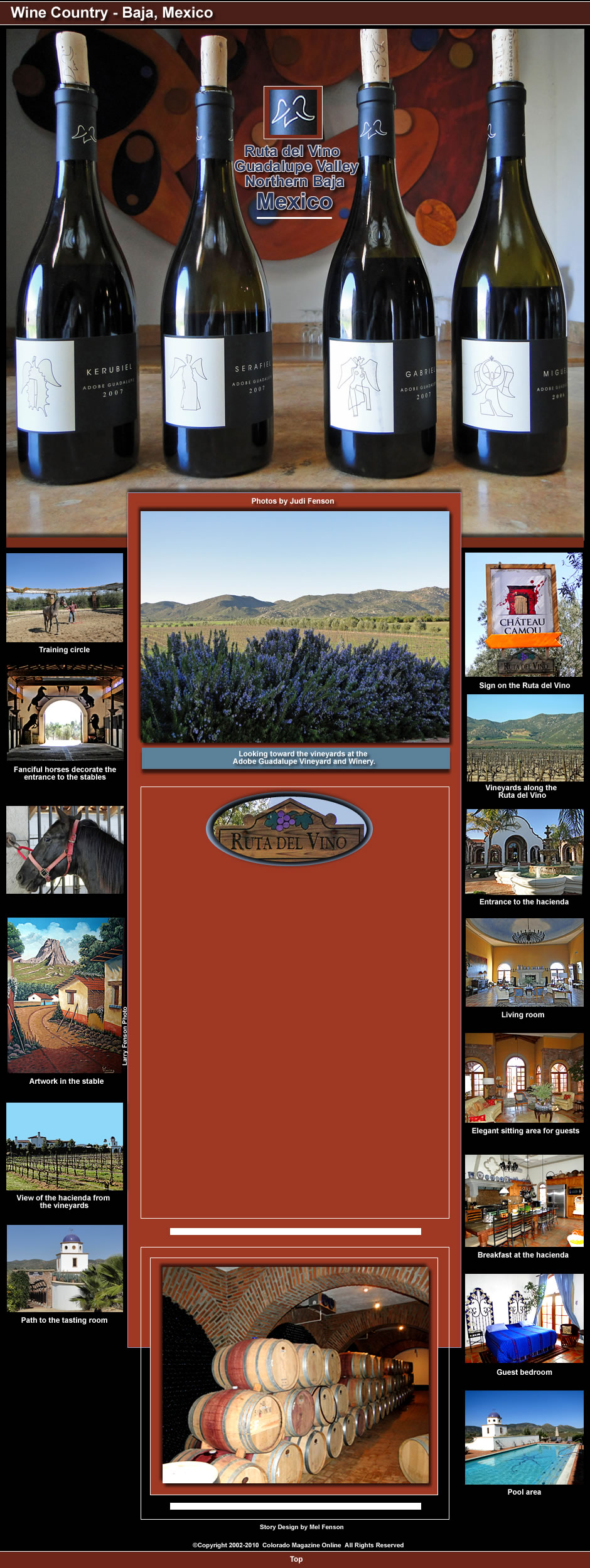

by Judi Fenson
Traveling on the Ruta de Vino in northern Baja, Mexico, provides a glimpse of what Napa Valley was like before it became the number 2 tourist attraction in California---right behind Disneyland!
Seventy miles south of the Mexican border one discovers that there is more to Mexico than Tequila; 90% of Mexico's table wine is produced in a wine growing region that includes the valleys of Santo Thomás, San Vicente and Guadalupe. This area is easily reached by traveling south from San Diego to Ensenada and then picking up Highway 3.
Grapes were first introduced to this region by the Spanish in the late 1500's, followed by Russian immigrants about 100 years ago. The Mediterranean climate provides ideal conditions for growing grapes.
The Ruta de Vino (Highway 3) meanders for 14 miles through the Guadalupe Valley, which is 2/3 the size of Napa Valley. Today there are around 40 vineyards and wineries, many of them small family-run boutique and organic wineries. Many wineries are open to the public for tastings at modest costs. L.A. Cetto, the largest wine producer in Mexico, offers free tours and tastings. In addition to vineyards, groves of olive trees are planted as a shield against the hot Santa Ana winds. Bountiful harvests of olives are used for olive oil and other products such as olive bread.
We stayed overnight at the Adobe Guadalupe, a working 60 acre vineyard and winery bordered by olive and citrus groves. Owners Donald and Tru Miller have opened 6 rooms to paying guests in their beautiful hacienda, designed by a Persian architect. There is an angel theme throughout the grounds and the wines are named after archangels. Complimentary wine-tasting is offered to guests in a tasting room adjacent to the hacienda.
The Millers breed Aztec horses, a selective mix of Andalusian and Quarter horses. The handsome horses are quartered in a very well-kept stable and trained in an adjacent area.
Further information on the Adobe Guadalupe can be found at www.adobeguadalupe.com.
 |
|